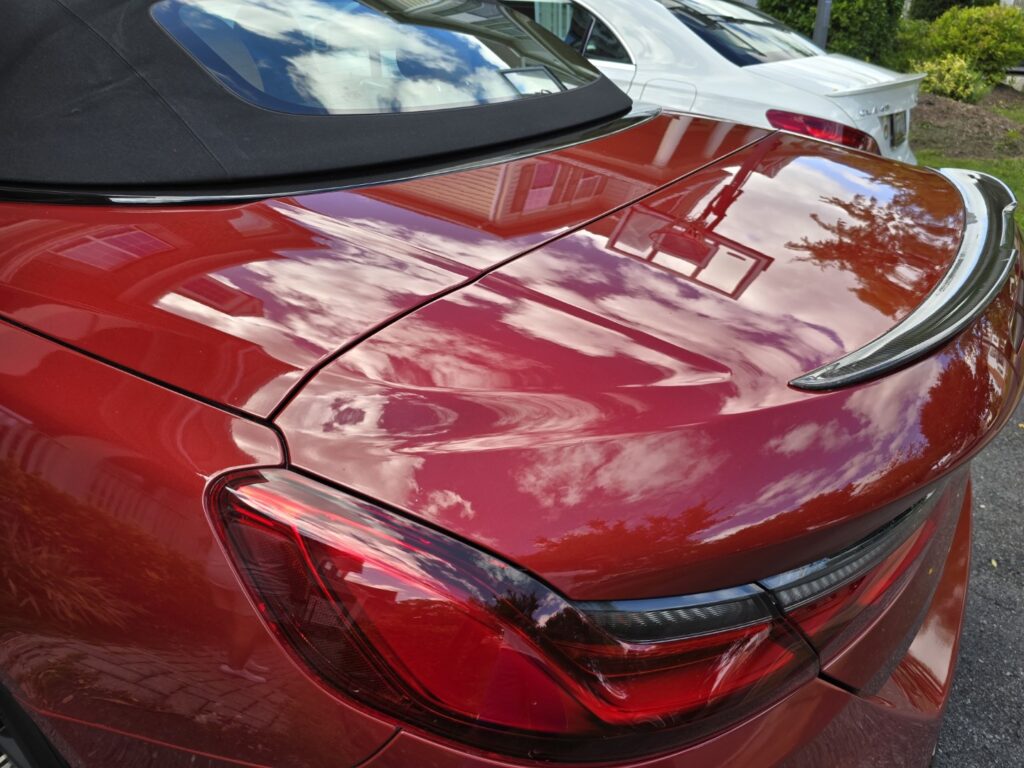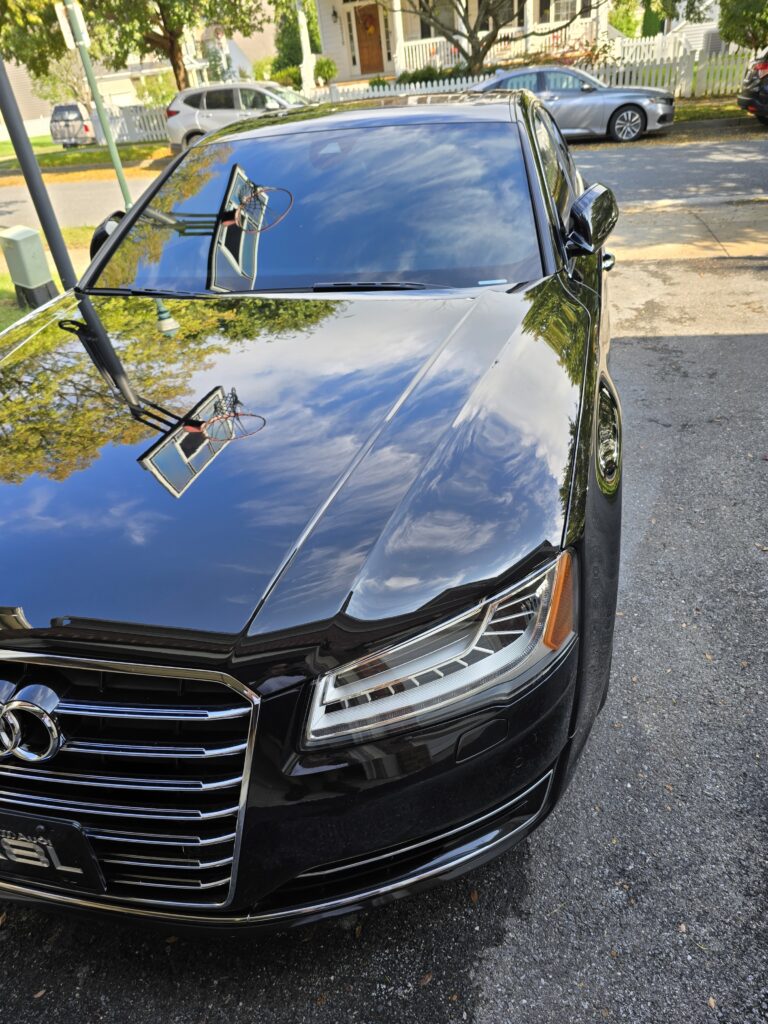
Introduction to Ceramic Coating
What Is Ceramic Coating?
Ceramic coating is a liquid polymer applied to the exterior of a car that chemically bonds with the factory paint. It creates a protective layer that shields the car’s surface from environmental contaminants like dust, dirt, and UV rays. Think of it as a durable shield that keeps your car looking fresh and glossy.
How Ceramic Coating Works
Ceramic coating works by filling microscopic imperfections in the car’s paint, creating a smooth, hydrophobic surface. This surface repels water, dust, and grime, making it harder for particles to cling to your car. Essentially, it’s like a raincoat for your car, but much more sophisticated.
Challenges of Dusty Environments for Cars

Effects of Dust on Car Paint
Dust particles are abrasive. When left on a car’s surface for prolonged periods, they can scratch and dull the paint. Over time, this can degrade the car’s aesthetic appeal and reduce its resale value.
Long-Term Damage from Dust Accumulation
If not cleaned regularly, dust can mix with moisture to form grime that sticks to the paint. This can lead to corrosion and even damage the clear coat, exposing the base paint to further wear and tear.
Challenges in Cleaning Cars in Dusty Regions
Washing a car frequently in dusty environments can be a hassle. Plus, improper cleaning techniques can cause micro-scratches, further exacerbating the problem. Without proper protection, your car is in a losing battle against the elements.
Benefits of Ceramic Coating in Dusty Environments

Enhanced Paint Protection
Ceramic coating provides a robust layer of protection that prevents dust particles from directly contacting the car’s paint. This minimizes the risk of scratches and other damage caused by abrasive dust.
Dust Resistance and Hydrophobic Properties
The hydrophobic nature of ceramic coating makes it difficult for dust and dirt to stick to the car’s surface. Most of the debris slides off easily during a wash or even with a light rain.
UV Protection in Arid Regions
Dusty environments are often accompanied by intense sunlight. Ceramic coating includes UV-resistant properties that prevent paint from fading due to prolonged sun exposure, keeping your car’s color vibrant for years.
Long-Term Cost Savings
While the initial investment might seem steep, ceramic coating reduces the need for frequent detailing and paint correction. Over time, this translates to significant cost savings.
How Ceramic Coating Reduces Maintenance

Easier Cleaning and Reduced Washing Frequency
Thanks to its smooth surface, ceramic-coated cars are easier to clean. You’ll notice that most of the dust and dirt can be removed with minimal effort, cutting down on washing time and frequency.
Preventing Micro-Scratches
The protective layer created by ceramic coating acts as a barrier against minor abrasions caused by dust or improper cleaning tools.
Protecting Against Harsh Cleaning Agents
Ceramic coating reduces the need for strong cleaning chemicals, as most contaminants can be wiped off easily. This helps maintain the integrity of your car’s paint over time.
The Application Process of Ceramic Coating

Preparation of the Car Surface
Before applying ceramic coating, the car’s surface must be thoroughly cleaned, polished, and free of any contaminants. This ensures a flawless bond between the coating and the paint.
Step-by-Step Application
The ceramic coating is applied in thin, even layers using an applicator pad. After application, the coating needs time to cure to form a solid protective layer.
Curing Time and Aftercare Tips
Curing usually takes 24-48 hours, during which the car should not be exposed to water or dust. Regular maintenance, like using a pH-neutral car shampoo, ensures the coating’s longevity.
Common Misconceptions About Ceramic Coating
Ceramic Coating Is Not a Replacement for Wax
While ceramic coating offers superior protection compared to wax, it does not eliminate the need for regular maintenance. It’s an enhancement, not a miracle cure.
It Does Not Make Your Car Invincible
Ceramic coating is highly durable, but it cannot prevent all forms of damage. Deep scratches, chips, and dents can still occur if the car is subjected to significant impact.
Choosing the Right Ceramic Coating Product
Factors to Consider When Buying Ceramic Coating
Look for products with a high SiO2 (silicon dioxide) content, as they provide better protection and durability. Also, consider the reputation of the brand and customer reviews.
Professional vs. DIY Applications
Professional application ensures precision and longevity but comes at a higher cost. DIY kits are more affordable but require patience and attention to detail for optimal results.
Conclusion
Ceramic coating is more than just a luxury—it’s a necessity for anyone living in dusty environments. From protecting your car’s paint to making maintenance a breeze, ceramic coating provides a range of benefits that justify the investment. If you want to keep your car looking new and shiny for years to come, ceramic coating is the way to go.
FAQs
How long does ceramic coating last?
Ceramic coatings typically last 2-5 years, depending on the product quality and maintenance routine.
Can ceramic coating prevent scratches entirely?
No, ceramic coating reduces the risk of minor scratches but cannot prevent deep or severe scratches.
Is ceramic coating safe for all car colors?
Yes, ceramic coating is suitable for all car colors and can even enhance the vibrancy of the paint.
How often should ceramic coating be reapplied?
Reapplication depends on the product but is usually needed every 2-3 years for optimal protection.
Can I apply ceramic coating myself?
Yes, DIY kits are available, but professional application ensures better results and longevity.
